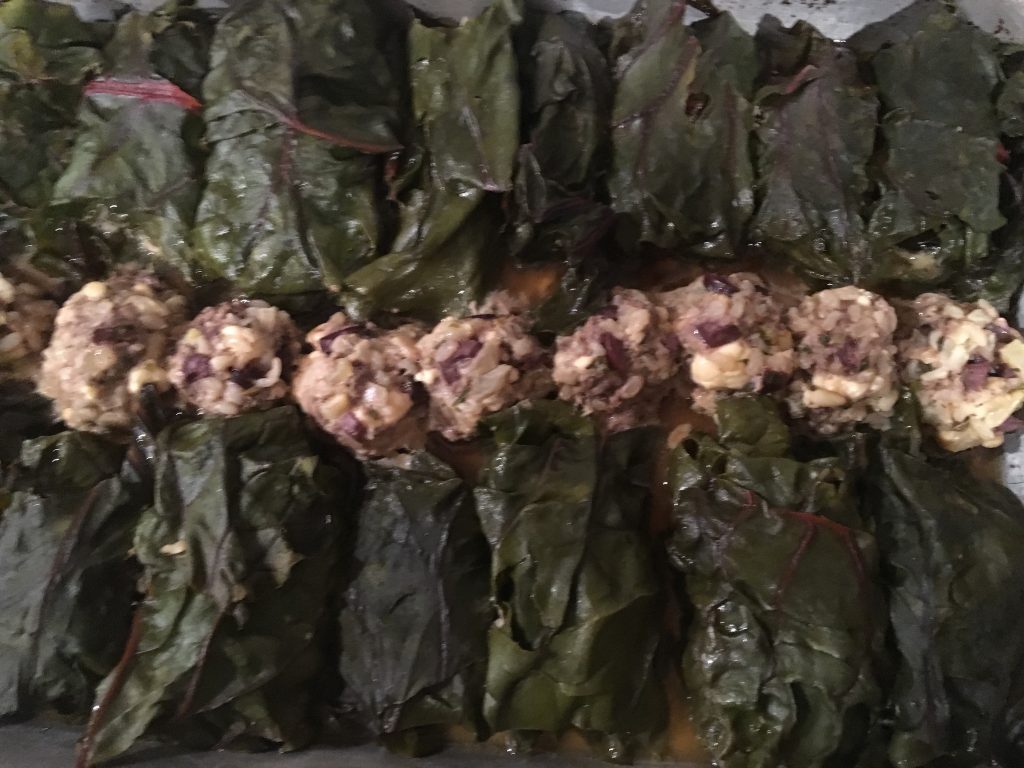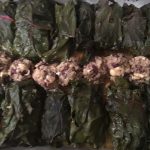
My farm boy dad was an experienced gardener, having been raised on a farm with nine siblings to be fed. He was never happier than when in his vegetable garden, and he brought produce into the kitchen with great satisfaction. I do believe, though, that he took the ultimate pride in the firm heads of cabbage, with their tightly furled leaves and bright green color. Dad loved cabbage, but it was an unrequited love, as cabbage was particularly tough to digest for someone with his gut issues. Long before terms like IBS and fodmaps were part of the vernacular, eating cabbage kicked him to the curb repeatedly. But he ate it and other items that caused him pain and bloating, because… well, I guess because that’s just what we did in those days.
By the time I was a young adult, the beginnings of my own IBS had emerged. Unlike my dad, I had the whole cabbage thing figured out, along with legumes, and avoided them like the plague. So, driving with my husband last week to pick up our CSA veggie share, it should not have been a surprise when I mentioned that we would be hitting the produce-trading table with the week’s cabbage share. Suddenly, he began to wax nostalgic about… cabbage rolls. For those not familiar with cabbage rolls, they consist of a blanched cabbage leaf stuffed with ground meat, rice and seasonings, which is cooked long and slow in a bath of tomatoes and their juices. I believe they originated in Eastern Europe, but they are quite popular in the Midwestern United States. From my perspective, they are little bloat balls of doom.
Now my husband is regretfully tolerant of my dietary adjustments, but I have learned that when the longing for a forbidden item hits, I need to nip it in the bud, pronto. Attempting to snatch victory from the jaws of cabbage roll defeat, I suggested that we could make meat-and-veggie rolls by stuffing a more acceptable vegetable, like maybe chard. It actually had the advantage of being a softer leaf that would not require the extra step of blanching to relax it; he’d never know the difference, they’d be even more delicious than cabbage rolls, etc., etc. This appeared to work, so now I had to actually make chard rolls.
So who knows what goes into a chard roll? I decided to think more like a Greek than an Eastern European. Chard shares similarity in taste to spinach, which goes well with lemon, and feta might be good tucked in there somewhere. Heck, I like lamb better than beef, and yummy things like olives and pine nuts would be right at home in a vegetable meat roll. Right? Luckily, this proved to be true, because the chard rolls turned out to be so-o-o much better than cabbage rolls! The chard leaves became silky, imbued with the lush flavors of broth and lemon. The meat stuffing had the richness of lamb and pine nuts, with tang provided by olives and feta. These rolls, conceived in desperation, were the best meat rolls I could imagine. It matters not whether you are an aficionado of cabbage rolls; you should try these. BTW, I don’t fool myself that the cabbage roll craving won’t show its face again, but I will worry about that when it happens. In the meantime, I’ll be making these…
Greek Style Chard Rolls
Ingredients
- 1/3- cup rice parboiled in 1 cup water: 10 minutes for white rice, 20 for brown rice
- 1 Tbsp. garlic infused olive oil or 1 clove diced garlic with 1 tablespoon olive oil
- ½ cup diced fennel
- ½ cup diced onion
- 2 Tbsp. pine nuts
- ¼ cup finely chopped Kalamata olives
- ½ cup chopped parsley
- ¾ tsp. salt
- ¾ tsp. pepper
- ½ tsp. dried oregano
- ½ tsp. fennel seed
- 1 Tbsp. dried dill
- ½ cup crumbled feta cheese
- 1 lb. ground lamb 85% lean
- 1 egg beaten
- 2 bunches chard
- 1-½ cups chicken broth
- 2 Tbsp. lemon juice
Instructions
- Preheat the oven to 350° F.
- Heat the olive oil in a large skillet over medium high heat. Add the fennel, onion, pine nuts and garlic, if using. Sauté, stirring occasionally until the vegetables begin to soften and the pine nuts begin to toast. Stir in the olives, parsley, salt, pepper and spices. Remove from heat to cool while you prepare the chard.
- Wash the chard leaves, then slice out the part of the stem beneath the leaf, leaving just the leaf. Spray a 9x13-inch baking pan with cooking spray. Stir the feta cheese crumbles and egg into the cooled vegetable mixture, then combine thoroughly with the ground lamb. Place several tablespoons of the meat mixture at the top of a chard leaf. Fold in the sides of the leaf over the meat, then roll up to enclose the meat. Repeat with remaining chard leaves and meat mixture until chard leaves are used. Make any remaining meat mixture into small meatballs. Arrange the chard rolls and meatballs in the prepared pan, pushing them tightly together as pictured. Combine the broth and lemon juice and pour over the rolls. Cover the pan tightly with foil and bake in preheated oven for 45 to 60 minutes, until chard is done and meat mixture has expanded to fill the rolls. Serve hot.

